You are in Gangtok – the home of mountains and monasteries, Momos and Masauyra curry!
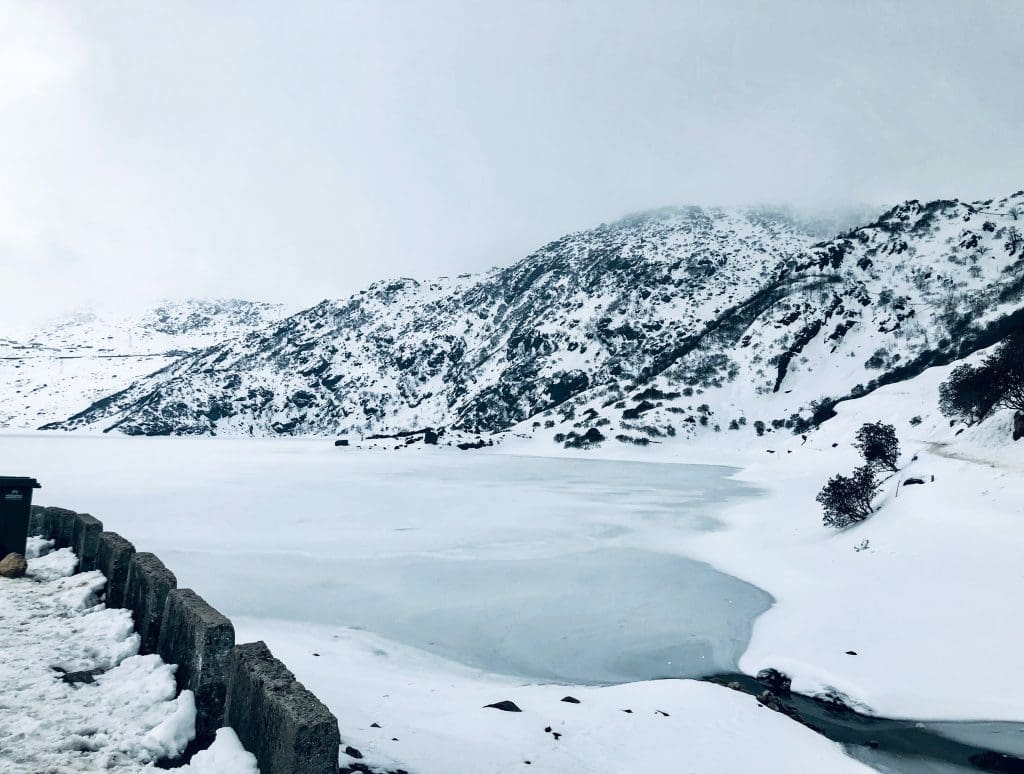
What a perfect getaway during the difficult days of Corona. Prepare yourself for the mystic call of the mountains and the peaceful chants of Buddhist monks as bells ring in ancient monasteries and Zen-like peace envelopes you.
Gangtok, the alluring capital of Sikkim is the old center of Tibetian Buddhist pilgrimage, and its many shrines, temples, and prayer flags dot a peaceful and green countryside.
Situated amidst the mighty mountainous terrain of the Eastern Himalayas and surrounded by sylvan hills and waterfalls, Gangtok is a perfect destination for a vacation with your family and friends this summer.
Visit these 7 diverse places, each of which will create a unique experience …
Ban Jhakri Falls Park
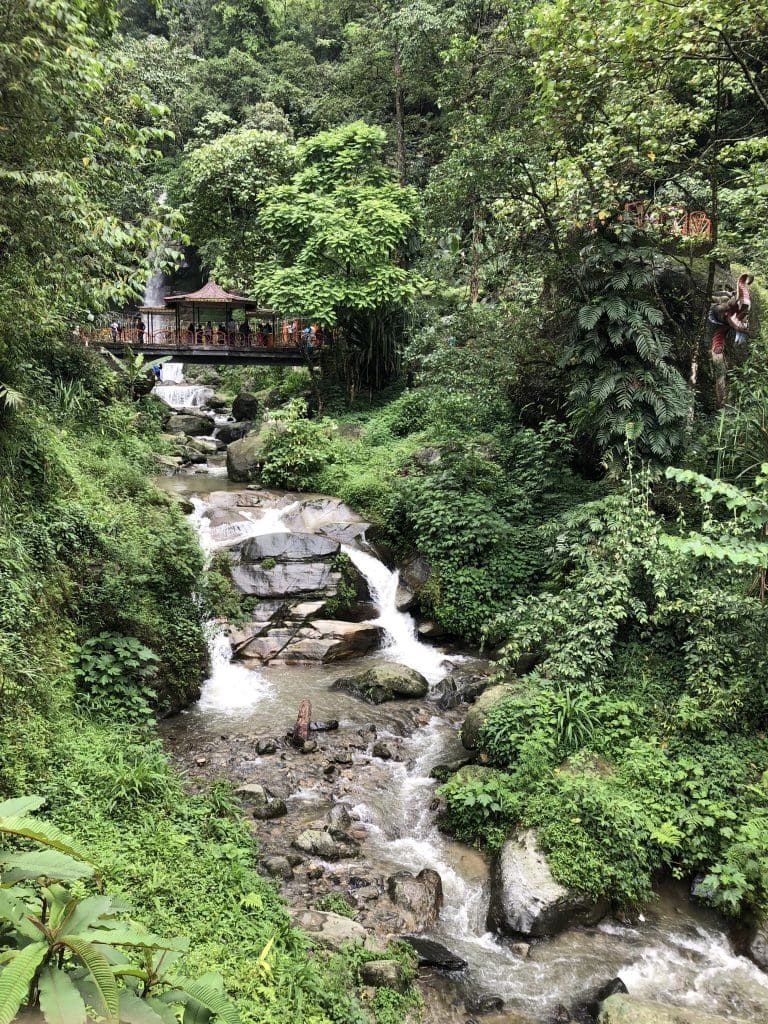
The Ban Jhakri Falls meaning ‘Jungle Priest’ or ‘Jungle Magician’, is a major tourist attraction and also an energy park. Named after Ban Jhakri, a mythical healer in the Nepali communities’ folklore, the Park has ethnic sculptures and figurines depicting the Jhakri community and their rituals.
The stunning Falls drop from a height of 100 feet from the mountains and are a captivating experience on its own. Set in a 2 acre landscaped park with pathways, gazebos and footbridges, streams, forests, and flowering plants, the Park is not just an eye candy but an energy bar too.
The play equipment generates energy as the children play in the swings and slides. There is a lake with paddleboats and there is a viewing platform in the forest landscape for visitors to take in the peace and mountain views around.
Don’t miss to click pictures in their traditional dress that are provided in the stalls near the falls.
Ranka Monastery
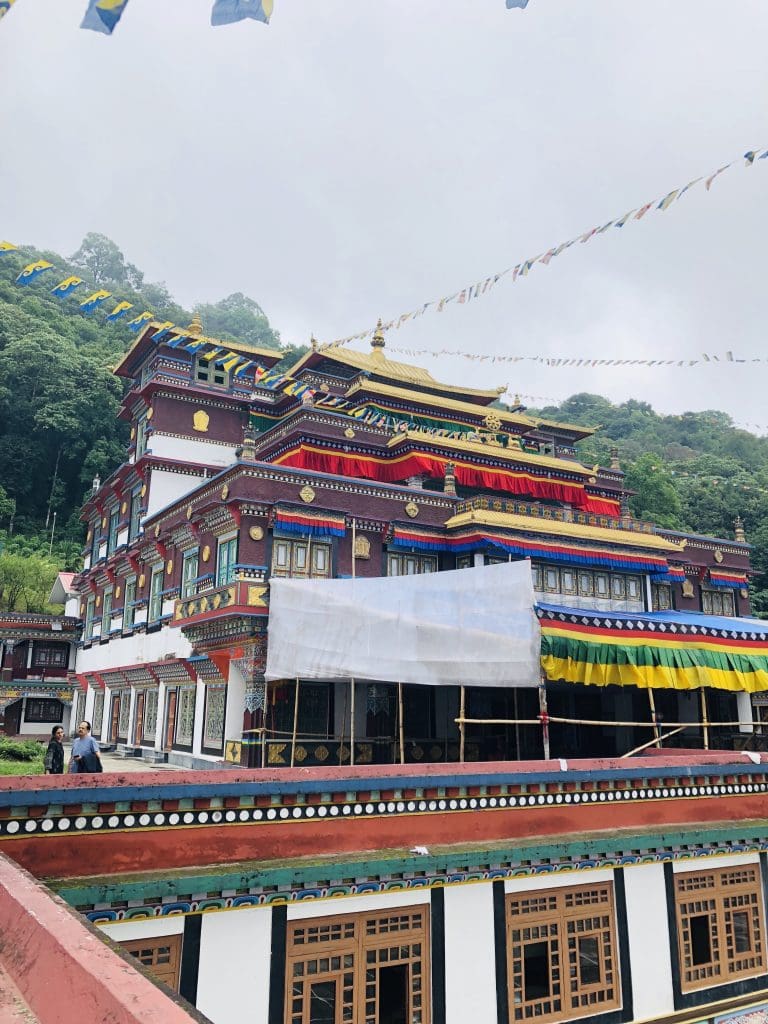
Fenced by lush mountains, the Ranka or Lingdum Monastery built in 1998 CE is one of the most popular monasteries in Sikkim. Welcomed by a huge line of prayer bells, this place represents tranquillity. The colourful monastery stands opposite to the prayer bells and the green hills and the mist providing it with a picturesque setting.
The seat of Zurmang Charwang Rinpoche, the present Rinpoche being the 12th successive incarnation, the monastery has attracted a lot of filmmakers on account of its Tibetan architecture and scenic setting.
The monastery itself is beautiful with an impressive gold plated Buddha statue inside the sanctum, stunning wall hanging and paintings decorating the walls, and lamas reading their prayer books on low tables in long rows. The main prayer hall is surrounded by the classrooms of the young lamas. Note to take permissions before you click pictures with them.
If you are visiting during the evening hours, you will be captivated by the melodious sounds of the evening prayer time when monks sing Buddhist hymns in rhythm to traditional musical instruments.
If you are fortunate to visit the monastery during the Tibetan New Year you can experience the exotic Lama dance performed by the Buddhist monks.
The monastery is a must-visit also because of the fact that its location commands a captivating view of the sun setting upon the snowcapped Kanchenjunga mountain range.
Rumtek Monastery
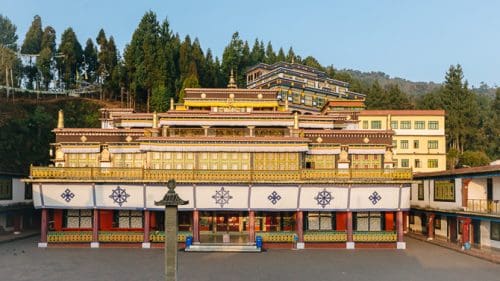
Located on a hill, and at a distance of 24 km from Gangtok is the awe-inspiring Rumtek monastery – the largest monastery in Sikkim.
It is not only a beautiful site but also of religious significance as the Rumtek Monastery is the holy seat of XVIth Gyawla Karmapa, the head of the Karma Kagyu order of Tibetan Buddhism.
Reflecting the best of Tibetan architecture, the shrine and monastery are set amidst a backdrop of majestic hills and beautiful waterfalls.
A close replica of the Kagyu headquarters in Tibet, the monastery compound comprises a temple, several stupas, a retreat for monks to meditate and other buildings, a school, and an aviary.
The main temple is a four-storey building dominated by a golden sculpture and decorated by Tibetan-style murals. The huge sanctum or the prayer hall has a beautiful 10 feet high statue of Sakyamuni Buddha, is decorated with splendid murals, statues, silk banners, and ‘Tangkhas’ and holds a very large number of ancient religious texts.
To get a real experience, visit during auspicious events as the monastery celebrates various festivals throughout the year.
During Gutor, at the end of the Tibetan year (February or March), the monks chant hymns and prayers and perform ‘chaam’ or ritual dances in the main courtyard for the public.
Namgyal Institute of Tibetology
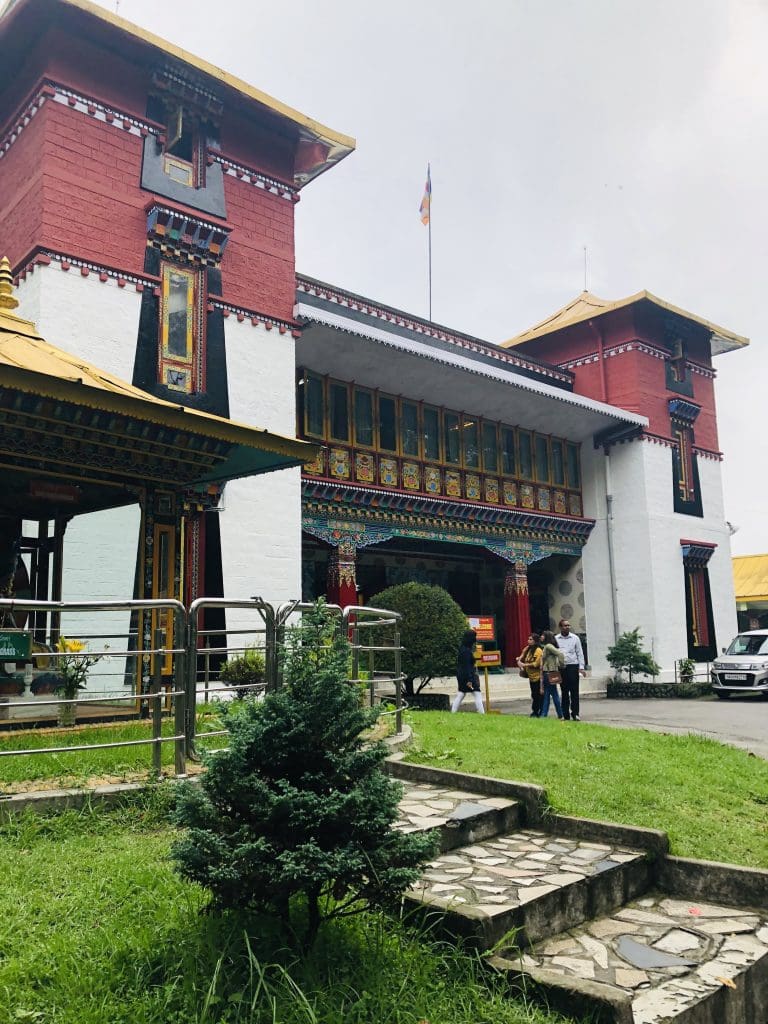
The Namgyal Institute of Tibetology is based in Deorali, 5 km south of Gangtok. This iconic Tibetan museum which is one of its kind in India and the third in the world houses the largest collection of Tibetan works outside of Tibet.
This two-storeyed building, beautified by the Tibetan architecture, has a museum on the ground floor with over 200 Buddhist icons and artifacts, a library on the first floor, and a Research and Reference Centre with access to literature on Tibetan practices and on the Himalayas.
The museum on the ground floor has a collection of statues and coins and historic relics like ancient manuscripts like Prajna Paramita and Astasahastra written in Tibetan golden script, as well as an 11th-century palm-leaf manuscript of the Saratama Prajnaparamita by Ratnakara Shanti, among others. A prized possession of the museum is an ancient casket which holds the relics of two legendary Asokan missionaries, Madhyama and Kasyapagotra.
The library has a collection of many books, articles, and research works related to Tibet. There is also a store next to the main building, where gifts and books are sold.
The Institute has encouraged and promoted research on the study of Mahamayan Buddhism and its philosophy, and Tibetan culture, religion, history, language, and art and holds in its repository a remarkable collection of Lepcha, Tibetan, and Sanskrit manuscripts and statues, along with some rare ‘thankas’ (tapestries used in Buddhist worship).
Tsomgo Lake
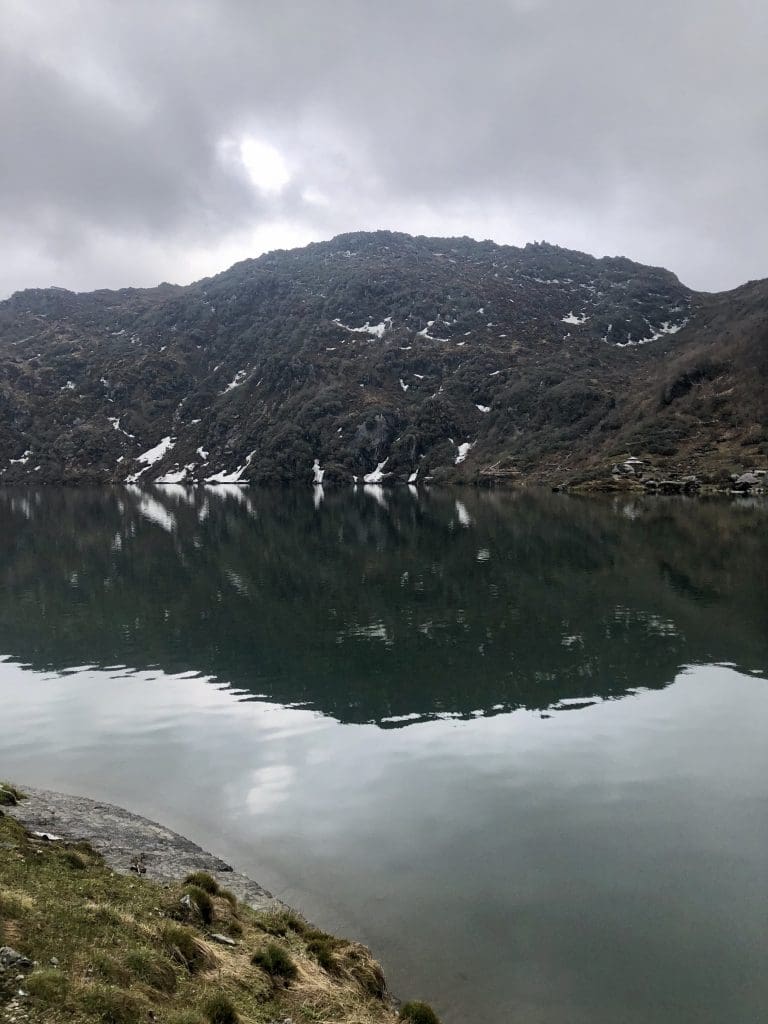
Located at a height of nearly 12,500 feet amidst the snowcapped Himalayan Mountains, the Tsomgo Lake, or the Changu Lake takes your breath away on account of its stunning location. The crystal clear waters with the reflection of the mountains surrounding it make the 40 km (two-hour journey) from Gangtok memorable.
Silver firs and green pine trees reach for glorious blue skies and are reflected in the kilometer-long glacial lake. With every day and every season, new colours add to the palette of the lake waters from a sparkling blue in springtime to a dark shining green as winter approaches. Mists and rains lend a grey sheen to the waters while summers reflect the variety of warm vibrant colours of summer flowers in bloom.
No wonder then that the lake is revered as a sacred place by locals who come here during Gurupurnima to offer prayers. According to folklore, ancient priests could foretell the future by simply looking at the changing colours of the waters of the lake as they reflected nature around it.
The region around the lake is rich in flora and fauna. In particular, it is a bird-watchers paradise. You can sight migratory birds such as tufted pochards, brown-headed gulls, and brahminy ducks not to mention rose finches, fantail flycatchers, and golden eagles.
Animal spotting is possible too and sighting of musk deers, gorals, or red pandas in the higher range of Tsomgo and even leopard and Himalayan black bear have been possible.
It is interesting to know that the lake is open all year-round, even during winter when it is frozen with snow-laden cliffs all around. There is a rare out-of-this-world picturesque beauty to the lake which becomes softly radiant as the snow melts and all kind of wildflowers, rhododendrons, irises, and poppies bloom around the lake.
A rope car near the lake takes the tourists from the lake to the hilltop to give a more vivid view of the lake. The line to the rope car is beaten by the number of people wanting to go on a yak ride.
Nathu La pass
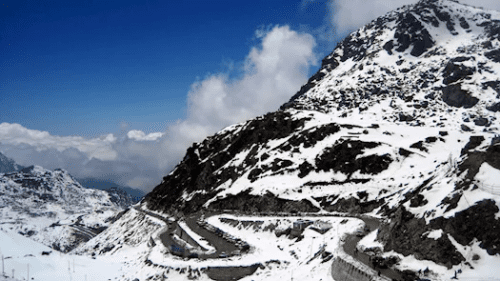
Who would not like to experience one of the highest motorable roads in the world at an altitude of 4302 m, and feel a part of history while traversing a section of the old Silk Route? Welcome to Nathu La, a high altitude pass at the Indo-China border.
Nathu La hold magic in its location as it opens up a scenic trek along winding roads to the valley, passing through stunning waterfalls, taking in awesome views of the snow-covered mountains as the cold pure air brushes past you and the sky sparkle a clear bright blue.
‘Nathu’ and ‘la’ are separate Tibetan words which mean ‘Listening ear’ and ‘pass’ and its extreme altitude allows it a panoramic view of majestic mountains along with mesmerizing views of the Chumbi Valley of Tibet.
Indian tourists can visit the Watershed War Memorial, the Army Exhibition Centre and the canteen near to it. Try not to miss the Yak ride, which is a popular attraction for the visitors here. Places around it are equally picturesque and rich with rare species of flora and fauna like the Menmecho Lake fed by snow-covered mountains, Baba Mandir, better known as the Baba Harbhajan Singh Memorial Temple, Tsomgo Lake, the Jelep La pass, the Kyongnosla Alpine Sanctuary and Zuluk Wildlife Sanctuary
The best time to visit Nathu La is summer, between the months of May to October. Indian visitors need to obtain the Protected Area Permit (PAP) issued by Tourism and Civil Aviation at Gangtok, or through a registered travel agency and few hotels.
Read More: Discover your India



